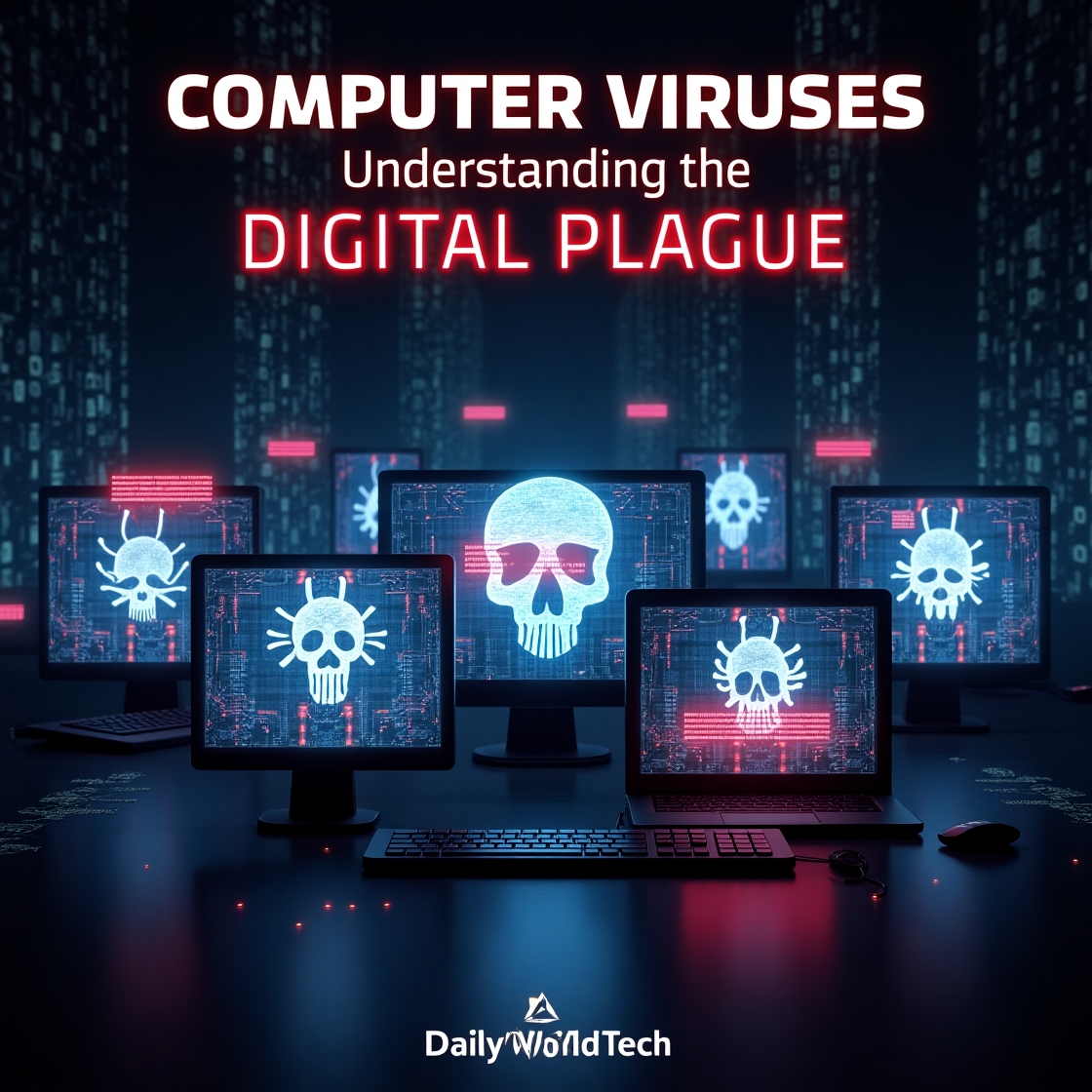Computers and the internet are now key parts of everyday life due to how digitized the world is today. At the same time, using more technology has led to a rise in computer viruses. Such programs might enter computers, take away private data, change essential data files and destroy computer networks.
The blog investigates the idea of computer viruses and looks at their past, the types that exist, how they operate, how to tell if a virus is present, prevention methods and so on.
What does a Computer Virus mean?
A computer virus is a kind of harmful program made to copy itself and pass from one device to another. As with a virus, it connects with standard computer files or programs and runs when the host application is used.
A virus that has started running can:
- Corrupt files
- Remove data
- Make system operations unreliable
- Stop all network traffic
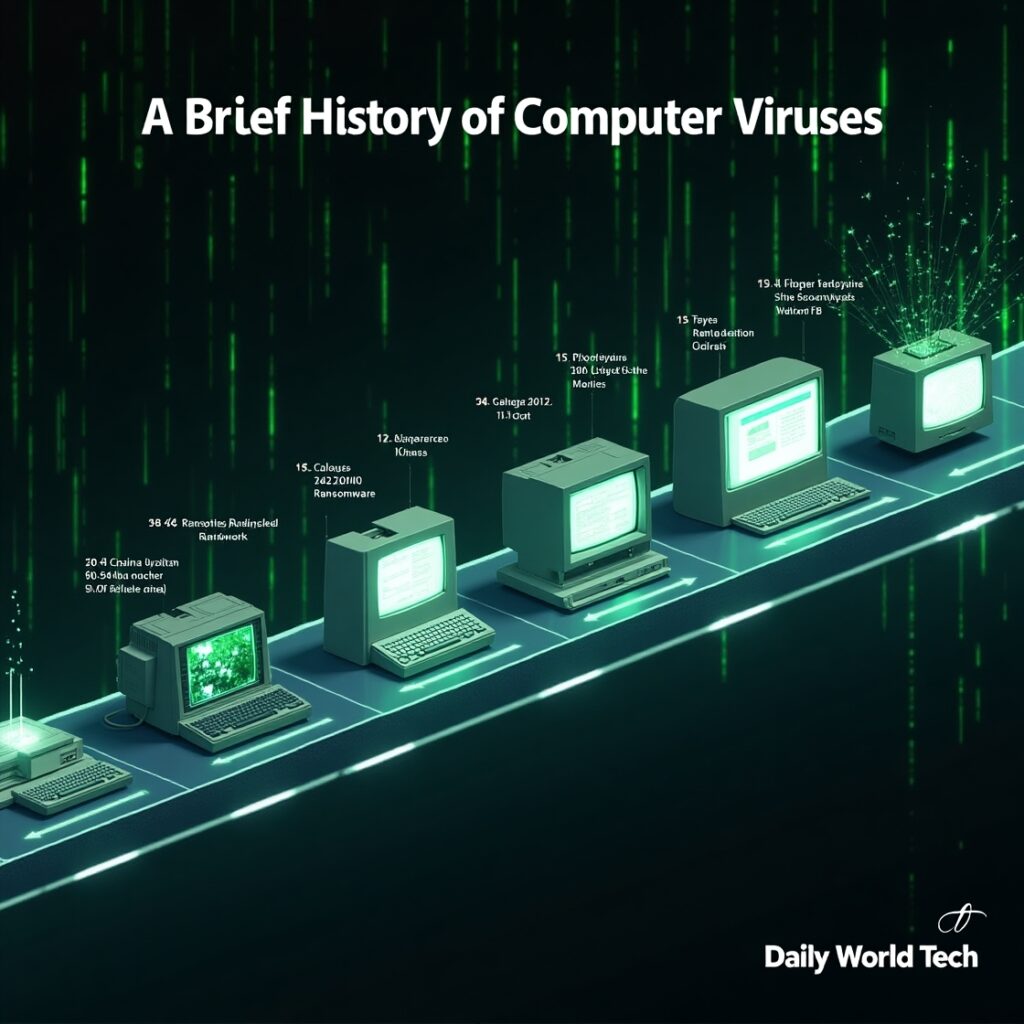
A Brief History of Computer Viruses
The idea of self-replicating code first developed in the 1940s during the work of John von Neumann. Nevertheless, the very first virus was found in the early 1980s.
- 1982: The teenager known as Rich Skrenta built the first virus, called Elk Cloner, that was spread by passing floppy disks on Apple II computers.
- 1986: PCs were exposed to a virus, the Brain virus which came from Pakistan and affected systems running MS-DOS.
- 1999: Email users received emails containing Melissa viruses which were among the first forms of email-based malware.
- 2000s–Present: Viruses have adapted to become major threats targeting mobile devices, cloud-based systems, and whole companies.
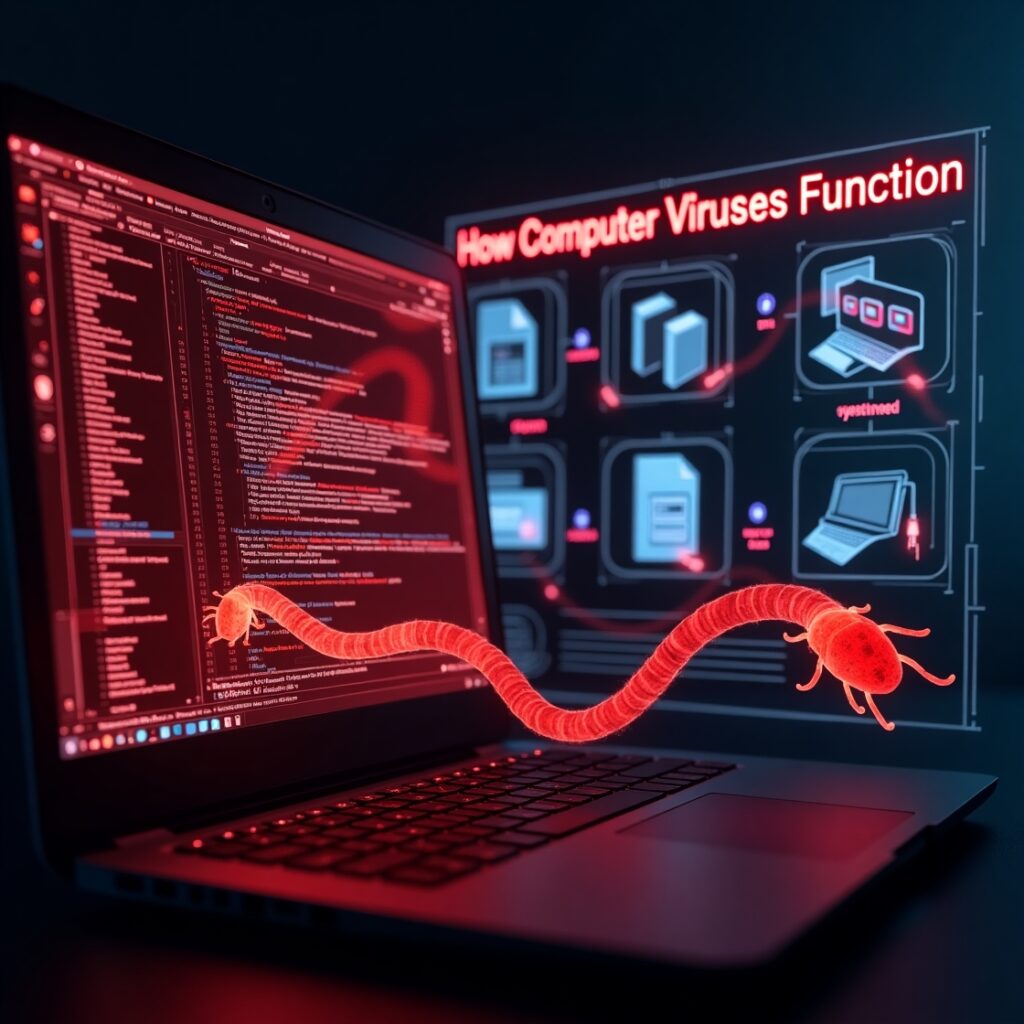
How Computer Viruses Function
Viruses are able to work by copying themselves into other programs on the computer. When the host program runs, the virus comes alive and performs its damaging action which could be any of the following:
- Modifying or deleting files
- Sending spam or malware to other systems
- Logging keystrokes to steal passwords
- Displaying unwanted advertisements
- Disabling system functionalities
The replication mechanism allows the virus to spread through:
- File sharing
- Email attachments
- Infected websites
- Removable media (like USB drives)
- Network connections
Common Types of Computer Viruses
There are several types of computer viruses, each with unique characteristics and methods of infection:
1. File Infector Virus
Attaches to executable files (.exe, .com). When the program runs, the virus activates and spreads.
2. Macro Virus
Targets macro language used in applications like Microsoft Word or Excel. It infects documents and spreads through sharing.
3. Boot Sector Virus
Infects the master boot record (MBR) of storage devices. It activates when the computer boots up, making it hard to remove.
4. Polymorphic Virus
Changes its code every time it replicates, making it difficult for antivirus software to detect.
5. Resident Virus
Installs itself in the computer’s memory and executes whenever the operating system is triggered.
6. Multipartite Virus
A hybrid that attacks both boot sectors and executable files, making it more destructive.
7. Web Scripting Virus
Infects websites and exploits browser vulnerabilities to deliver the virus to users visiting the infected page.
Types of Malicious Software and Their Characteristics
Malicious software (malware) is any software intentionally designed to cause damage to computers, steal data, or disrupt normal operations. Below are the major types of malware, explained in detail:
1. Virus
- Definition: A virus attaches itself to clean files and programs, spreading when those files are executed.
- How it works: Requires user interaction to activate (like opening a file or running a program).
- Effects: Corrupts or deletes files, slows down the system, causes crashes, or disrupts operations.
- Propagation: Spreads via infected files shared through email, downloads, or removable media.
2. Worm
- Definition: A worm is a standalone malware program that can self-replicate and spread independently.
- How it works: Does not need to attach to files or programs and spreads automatically across networks.
- Effects: Overloads network bandwidth, causes system slowdowns, and can carry malicious payloads.
- Propagation: Spreads through network vulnerabilities, email attachments, or file-sharing.
3. Trojan Horse (Trojan)
- Definition: Malware disguised as legitimate software to trick users into installing it.
- How it works: Once installed, it opens backdoors, steals data, or installs other malware.
- Effects: Data theft, unauthorized remote access, system damage.
- Propagation: Spread via downloads, email attachments, or fake software updates.
4. Ransomware
- Definition: Malware that encrypts files or locks systems and demands ransom to unlock them.
- How it works: Blocks access to data and displays ransom messages demanding payment.
- Effects: Data loss, financial damage, system downtime.
- Propagation: Delivered through phishing emails, malicious links, or software vulnerabilities.
5. Spyware
- Definition: Software that secretly monitors user activities and collects personal information.
- How it works: Runs in the background without user knowledge, tracking keystrokes, browsing habits, etc.
- Effects: Privacy invasion, identity theft, unauthorized use of data.
- Propagation: Installed through malicious websites, downloads, or bundled with other software.
6. Adware
- Definition: Software that displays unwanted advertisements, often disrupting user experience.
- How it works: Injects ads as pop-ups, banners, or redirects during browsing sessions.
- Effects: Slower system performance, intrusive ads, possible data tracking.
- Propagation: Bundled with free software or downloaded unknowingly.
7. Rootkits
- Definition: Malware designed to hide deep within a system and maintain privileged access.
- How it works: Conceals its presence and actions, making it difficult to detect or remove.
- Effects: Persistent control over the system, data theft, further malware installation.
- Propagation: Installed through phishing, trojans, or exploiting vulnerabilities.
8. Keylogger
- Definition: Software or hardware that records every keystroke a user types.
- How it works: Captures sensitive data like passwords and credit card info and sends it to attackers.
- Effects: Data theft, compromised accounts, identity theft.
- Propagation: Delivered via trojans, infected downloads, or malicious websites.
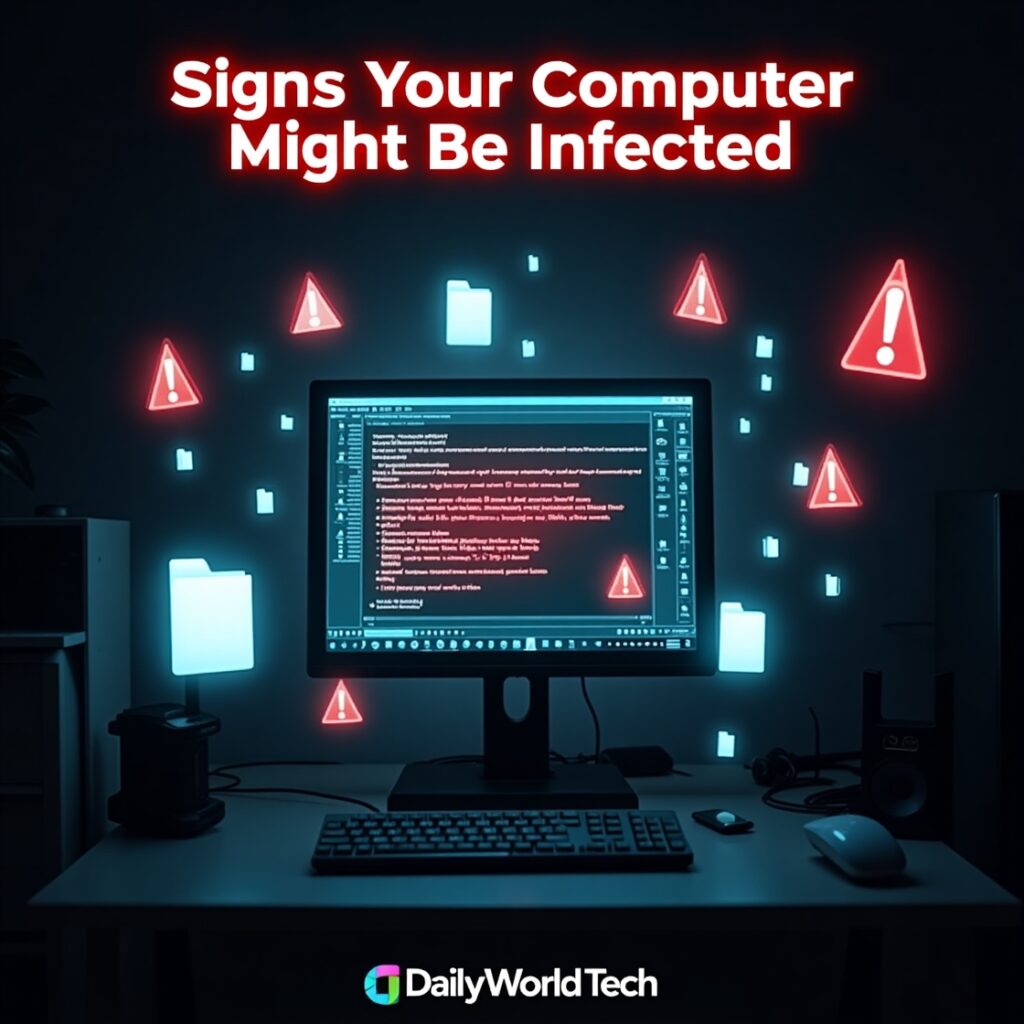
Signs Your Computer Might Be Infected
Detecting a virus early can minimize damage. Here are common signs of infection:
- Slow computer performance
- Frequent crashes or freezing
- Unusual error messages or pop-ups
- Files disappearing or being corrupted
- Unfamiliar programs running on startup
- Excessive hard drive activity
- Disabled antivirus software
- Strange emails sent from your account
How Computer Viruses Spread
Viruses can infiltrate systems in various ways:
1. Email Attachments
One of the most common methods. A user unknowingly opens an infected attachment.
2. Infected Software Downloads
Pirated or unverified software often contains embedded malware.
3. Removable Media
USB drives, CDs, and external hard drives can carry viruses from one device to another.
4. Malicious Websites
Clicking on suspicious ads, fake downloads, or misleading links can lead to infections.
5. File Sharing Networks
Peer-to-peer (P2P) platforms can harbor virus-infected files disguised as legitimate content.
Impact of Computer Viruses
The effects of a computer virus can be devastating, both for individuals and organizations:
- Data Loss: Viruses can delete or corrupt personal and business-critical data.
- Financial Damage: Businesses may face huge losses due to downtime, data breaches, and recovery efforts.
- Reputation Damage: Organizations hit by a virus may lose customer trust and brand value.
- Legal Consequences: Breaches can lead to legal action, especially if personal data is compromised.
Famous Computer Viruses in History
1. ILOVEYOU (2000)
Spread through email with the subject line “I LOVE YOU”. It infected over 50 million systems and caused billions in damages.
2. Mydoom (2004)
One of the fastest-spreading email worms, causing widespread disruption.
3. Stuxnet (2010)
A sophisticated worm believed to be developed by state actors. It targeted Iran’s nuclear program and was capable of physical destruction.
4. WannaCry (2017)
A ransomware attack that exploited a Windows vulnerability and impacted hospitals, banks, and government agencies worldwide.
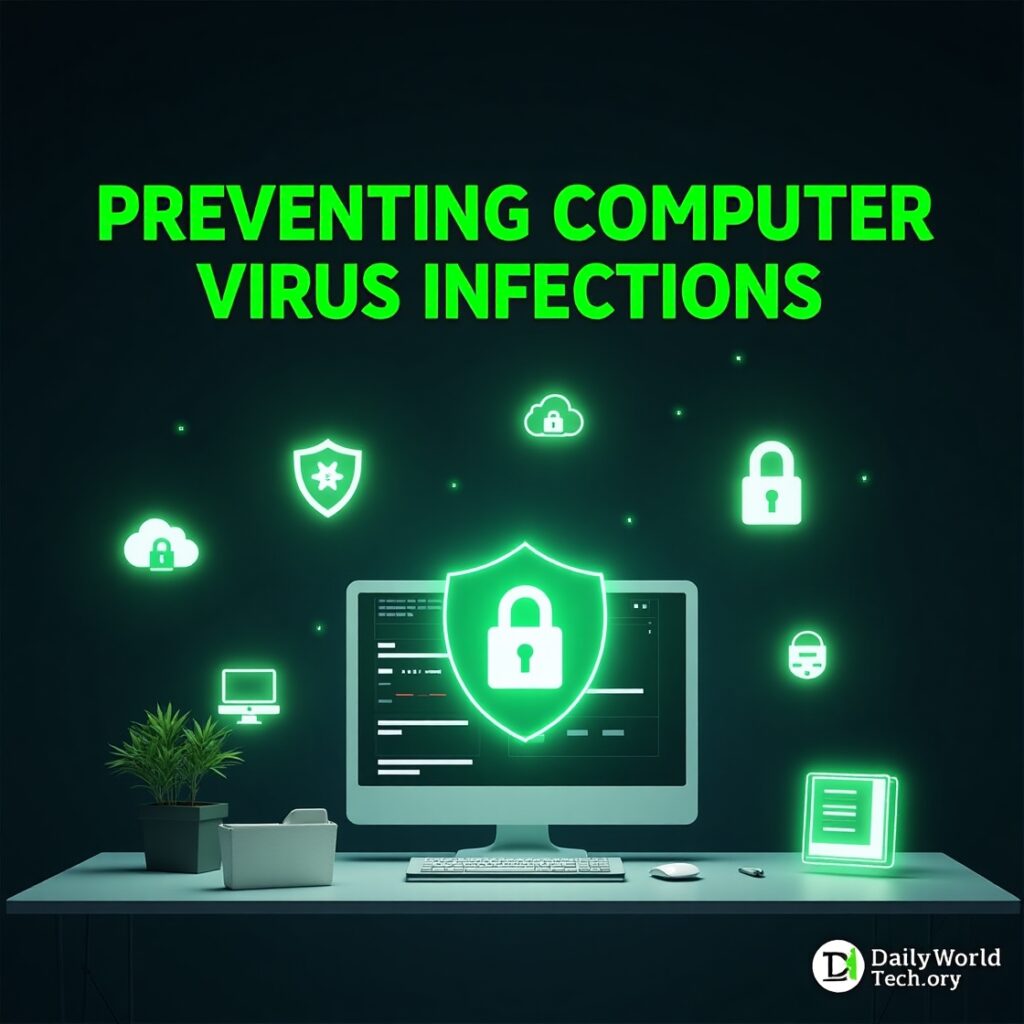
Preventing Computer Virus Infections
Prevention is better than cure. Here are some effective ways to protect your system:
- Install Antivirus Software
Keep a reputable antivirus program installed and regularly updated. - Update Your System
Regular updates patch security vulnerabilities that viruses often exploit. - Avoid Suspicious Links and Downloads
Do not click on unknown links or download files from untrusted sources. - Email Vigilance
Be cautious with email attachments, especially from unknown senders. - Backup Your Data
Regularly backup important files to an external drive or cloud storage. - Use Strong Passwords
Weak passwords can lead to unauthorized access and virus infiltration. - Enable Firewalls
Firewalls monitor network traffic and can block suspicious activity.
How to Remove a Computer Virus
If your system is infected, follow these steps to remove the virus:
- Disconnect from the Internet – Prevent the virus from spreading.
- Boot into Safe Mode – This allows only essential programs to run.
- Run Antivirus Scan – Use a trusted antivirus tool to detect and remove the virus.
- Delete Temporary Files – Clear out potentially infected files.
- Restore System – Use system restore to revert to a previous clean state.
- Seek Professional Help – For severe infections, consult IT experts.
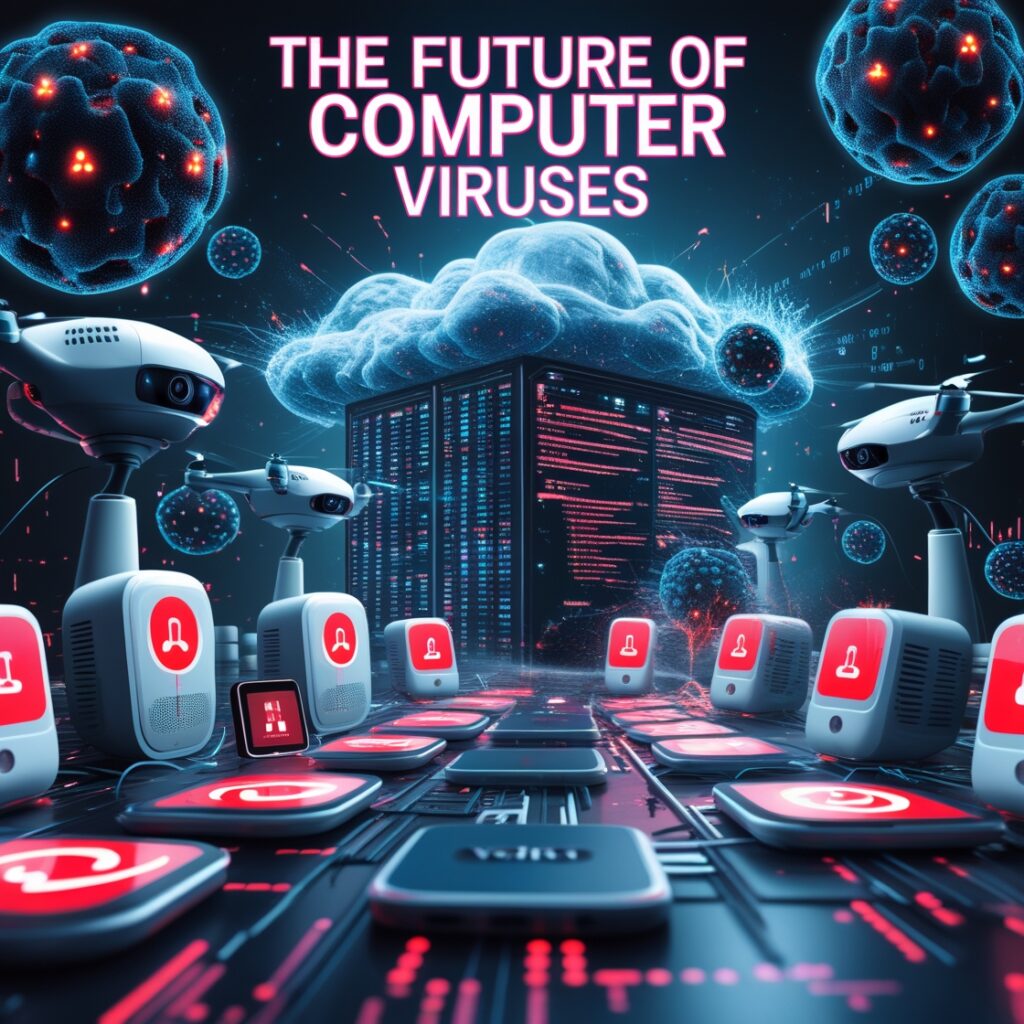
The Future of Computer Viruses
Changes in technology lead to updates in computer viruses. There may be situations in the future where:
- AI-Based Malware: Using AI to change and escape being found by antivirus software.
- Infecting devices through the Internet of Things (IoT), including devices like home assistants, cameras and thermostats.
- Risks related to the cloud: Hackers target weaknesses in the cloud, taking advantage of cloud-based storage and computing services.
- Advanced Persistent Threats (APTs) are used by certain governments in cyber warfare.
Fighting these threats will need us to be always alert, keep innovating and bring attention to them through public awareness.
Conclusion
There are still many dangerous and changing computer viruses in today’s digital world. They may create major financial, personal and career problems. It is very important for anyone with a digital device to learn about computer viruses, their workings and how to guard against them.
Following cyber security best practices and regularly getting updates can greatly lower the chances of infection and protect your digital possessions. Read more information about Computer Viruses….







